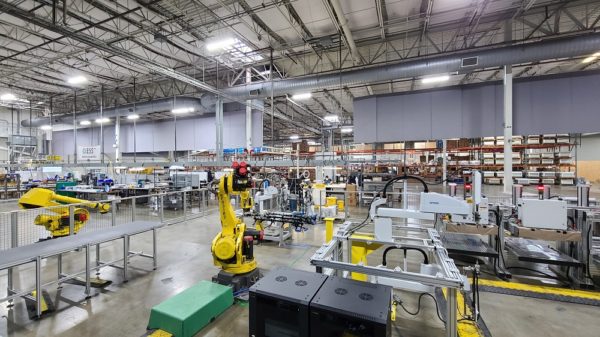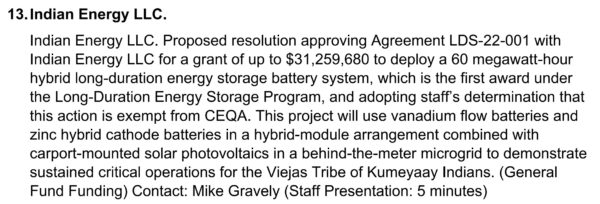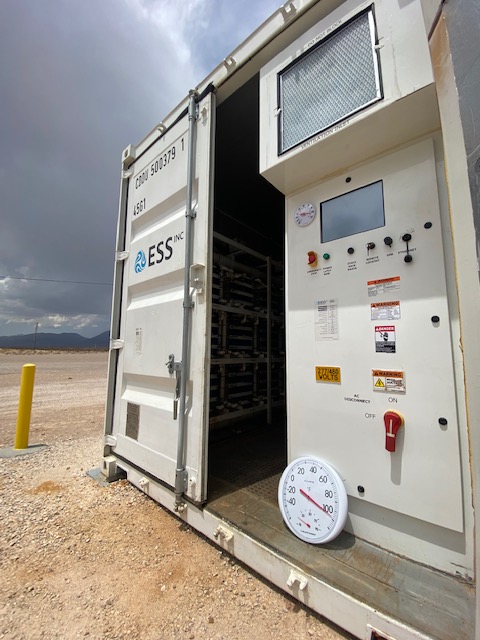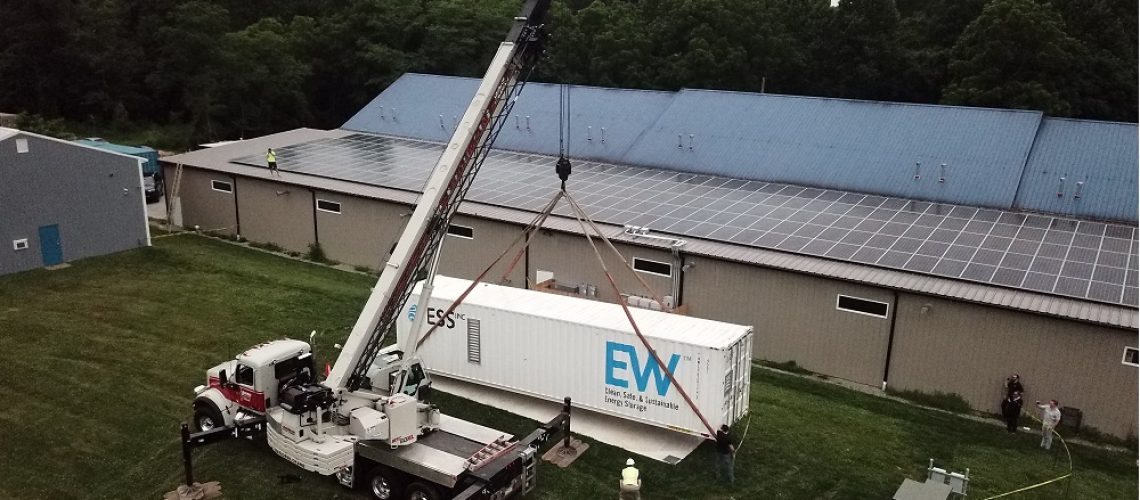It might be that long duration energy storage has turned its growth curve upward, and some of us might not have realized it. pv magazine USA sat with Hugh McDermott of Energy Storage Systems Inc (ESS Inc) at RE+ to discuss the company’s technology and future.
The truth is, all the commotion around batteries has mostly been focused on the lithium ion industry, which has announced plans to manufacture greater than 7 TWh/year by 2031. And while it’s true that 90% of this capacity appears to be slated for the auto industry, the stationary energy storage industry has a massively scaled and funded co-conspirator in lithium-ion, assisting with the rapid development of the global energy storage market.
However, the market is showing that Lithium Ion isn’t the only game in town. ESS Inc is now seemingly sold out of its Iron Flow Battery technology, and is working hard to expand by at least 400% by the end of 2023.
When we asked McDermott about the location of the nation’s upcoming long duration markets, he rattled off a list of utility scale opportunities via Requests for Proposals (RFPs) in Florida, North Carolina, Virginia, and California. If ESS were to close all of these deals, it would saturate their manufacturing capacity.
ESS then reminded us of the projects they have already signed, like their recently announced deal with California’s SMUD, for 200 MW/2,000 MWh of long duration projects. These projects are still being developed, and are expected to be deployed across five to ten sites and used to increase remote resilience. They will be placed near substations and other strategic distribution points.
The first facility is 4 MW/40 MWh, and is scheduled for deployment in 2023.
McDermott then mentioned ESS’s 2 GWh by 2026 deal with Softbank from 2021, and the conversation shifted to the logistics behind supplying this demand.

Image: ESS Inc.
In the United States, ESS seeks to expand their manufacturing to 25 MW per year by the end of 2022, and to over 100 MW by the end of 2023. The company recently partnered with Australia’s Energy Storage Industries Asia Pacific (ESI) to distribute ESS’ iron flow batteries in Australia, New Zealand and Oceania. ESI will also build a factory in Australia, which is expected to produce 400 MW per year for the country, and begin operations in 2024.
Aspirations of 750 MW per year manufacturing capability was mentioned in an earnings call.
The company sees demand reaching far beyond 1 GW/year of manufacturing capacity. The Long Duration Energy Storage Council released an analysis suggesting that under the right conditions, 1.5-2 TW/85-140 TWh of long duration batteries could be deployed by 2040.
McDermott said ESS sees four megatrends pushing these huge volumes:
- Climate change and the need for resiliency in places like Texas and California
- Decarbonization of electricity via renewables
- Electrifying everything (this could triple our electricity needs)
- Aging infrastructure
As we move through those trends, McDermott says, “once we cross 20-25% renewable electricity, balancing becomes more challenging using only 1-4 hour batteries. Due to its steepness, the evening ramp as the sun goes down becomes really challenging. We need to go beyond the ramp, into the evening peak period.”
Real life evidence of these future megatrends are appearing outside of ESS as well.

Source: California Energy Commission
California recently approved what might be the largest flow battery in the United States – a 60 MWh vanadium flow facility on Native California land. The battery will be coupled to a behind-the-meter microgrid with a solar carport.
Form Energy, with its 1 MW/150 MWh battery product, has signed two deals: one in Minnesota, and more recently a deal in Georgia that could reach 15 MW/1.5 GWh in size.
Add the Inflation Reduction Act into the mix, and McDermott likens it to “rocket fuel”. The long-duration market might see continued growth in excess of 90% a year, especially since ESS products get a 10% bonus from the domestic content incentive. Of course, that will drive learning curves, price declines, efficiencies, and increased volume.

Looking to its future, ESS’s goals are ambitious, but realistic. One of these goals is to deploy projects within one week of arriving on site. McDermott says ESS, ‘drops it in, plugs it in, fills it with water, and warms it up.’ Another goal is to increase the energy storage capacity of each shipping container by 20%, from 1.25 MWh to 1.5 MWh.
The company says that it will take time to reach these goals. They are going to have to work through supply chain challenges, which have nearly doubled their delivery times. They will need to install and field test their units in more challenging terrains and climates. And of course, they’re going to have to build additional facilities.
California recently approved what might be the largest flow battery in the United States – a 60 MWh vanadium flow facility on Native California land. The battery will be coupled to a behind the meter microgrid with a solar carport.
Form Energy, with its 1 MW/150 MWh battery product, has signed two deals – one in Minnesota, and more recently a deal in Georgia that could reach 15 MW/1.5 GWh.
Add the Inflation Reduction Act into the mix, and McDermott likens it to “rocket fuel”. The long duration market might see continued growth in excess of 90% a year – especially since ESS products get a 10% bonus from the domestic content incentive. That will drive learning curves, price declines, efficiencies, and increased volume.






